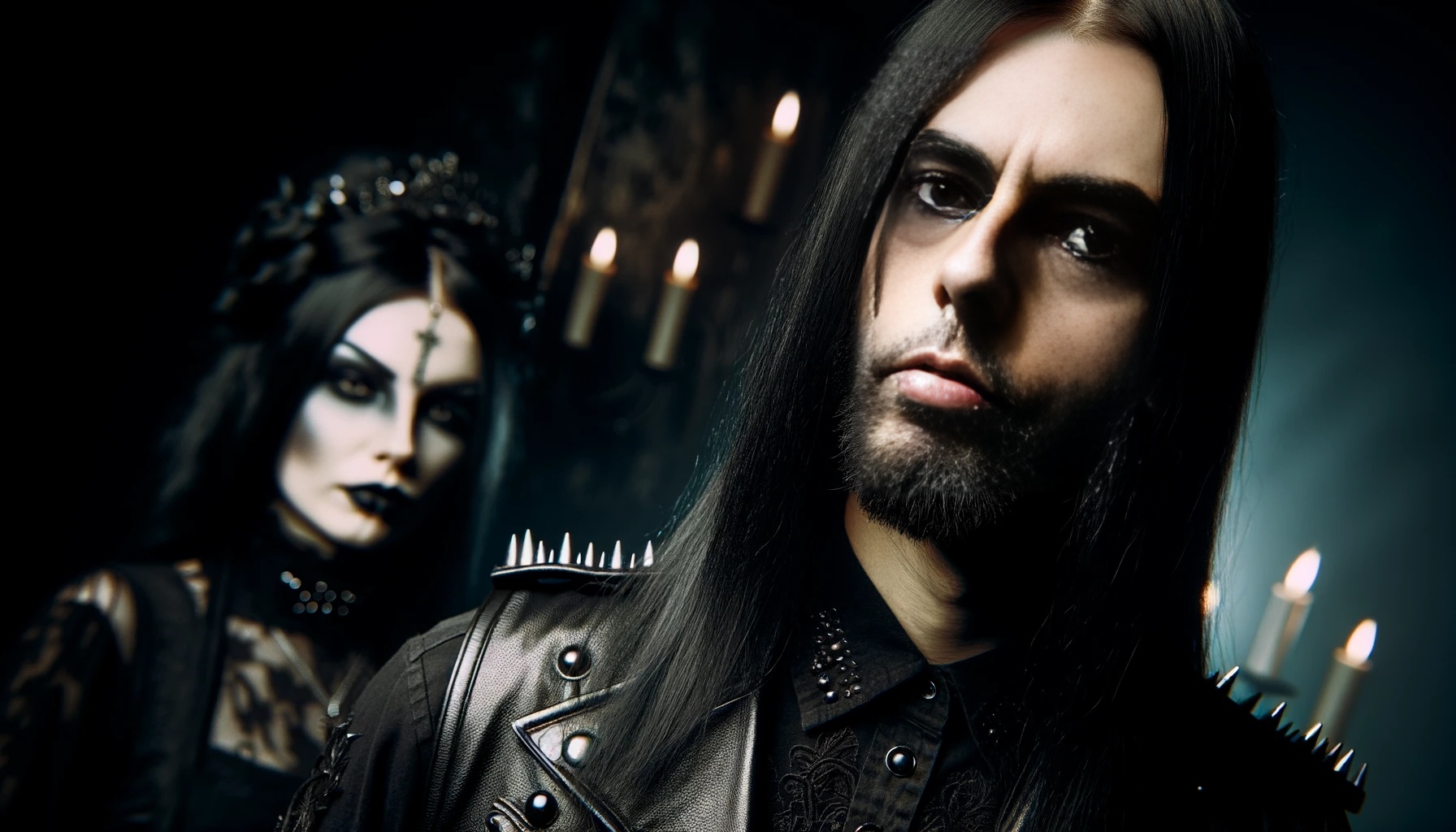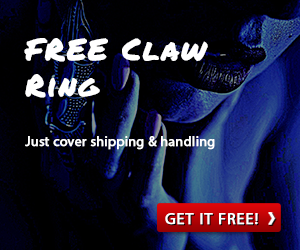There’s something undeniably seductive about the shadows—an allure that lingers in the pages of gothic literature and reverberates through the beats of dark, alternative music. You can feel it in the brooding tones of a Bauhaus track, hear it in the whispered promises of love and death in a Type O Negative song, and see it in the spine-chilling lyrics of a Skinny Puppy anthem. It’s the eroticism of gothic literature—a tantalizing mix of fear, desire, and the forbidden—that has left its mark on alternative music culture. But what exactly fuels this lustful connection between the written word and the auditory abyss? Let’s dive in.

The Sensual Darkness of Gothic Literature
Gothic literature is all about the sublime—an overpowering beauty wrapped in terror, with just the right amount of melancholy to get your heart racing. From the moment it was born in the 18th century, gothic fiction has been playing on the tension between lust and dread, weaving together tales of haunted castles, dark forests, and untamed desires. At the core of this genre lies the exploration of the human psyche’s most forbidden thoughts and emotions.
Take The Castle of Otranto by Horace Walpole, often credited as the first gothic novel. It didn’t just tell a spooky story; it lured readers into a labyrinth of power, madness, and sexual temptation. Then came Dracula, Bram Stoker’s blood-soaked masterpiece that heightened this blend of eroticism and horror. Count Dracula wasn’t just some monster; he was a figure of hypnotic sexual power, an icon of repressed desires, capable of driving even the most virtuous to madness.
And then there’s Mary Shelley’s Frankenstein, where the creation of life is fraught with violence, obsession, and destruction. It’s a dance between creator and creation, and it’s steeped in an uncomfortable undercurrent of sexual tension—one that questions the morality of unchecked power and primal urges.
What makes gothic literature so provocative is how it doesn’t shy away from taboo. It turns the forbidden into something to be explored, even embraced, casting shadows over conventional morality while inviting readers to revel in their darkest fantasies. This has laid the foundation for much of today’s alternative music culture, where bands don’t just play songs—they create atmospheres of desire, death, and the eternal pull of the unknown.

How Eroticism in Gothic Literature Shaped Alternative Music
Now, you might wonder—how does all this tortured passion and eroticism in gothic literature translate into music? It’s simple: the same themes of love, lust, and death echo through the speakers when you listen to alternative music, especially in the genres like darkwave, goth, post-punk, and industrial.
Lyrics as Dark Poetry
Just like the pages of a gothic novel, many songs in alternative music draw on romantic despair, morbid curiosity, and a deep yearning for something just out of reach. Let’s talk about The Cure, one of the pioneers of goth rock. Robert Smith’s lyrics are drenched in longing, often walking the tightrope between love and destruction. Songs like “Lovesong” and “Pictures of You” reflect the melancholic desires that ooze from gothic literature. There’s beauty in their sorrow—a seductive quality that pulls listeners into a narrative of undying love, even if that love is doomed.
And of course, you can’t talk about the eroticism of gothic literature without mentioning the band Bauhaus and their single “Bela Lugosi’s Dead.” It’s a slow burn of sound that captures the feeling of creeping dread, obsession, and romanticization of death—themes central to gothic literature and its erotic undercurrents. The band took the gothic novel’s aesthetic and turned it into an auditory experience.
The Erotic Power of Performance
In both gothic literature and alternative music, the erotic isn’t just in the words—it’s in the performance. Just as characters in a gothic novel captivate us with their twisted passions, musicians use their presence on stage to convey a similar energy. Think of Siouxsie Sioux of Siouxsie and the Banshees. With her fierce stage presence and commanding voice, she doesn’t just perform; she mesmerizes. She invokes the spirit of gothic heroines, embodying a power that’s equal parts terrifying and irresistible. There’s a level of intimacy that alternative musicians bring to the stage, a closeness that makes you feel like they’re performing for you—and only you—in some dimly lit, opulent chamber where anything could happen.
This kind of performance draws from gothic literature’s ability to seduce through mystery. Bands like Depeche Mode and Nine Inch Nails channel erotic tension in their music and live shows, blending desire, fear, and darkness into an intoxicating performance. They take gothic literature’s fixation on the push-and-pull between longing and denial and make it visceral, something you can feel in your bones.

Lust and Death: The Eternal Dance
If there’s one thing gothic literature taught us, it’s that desire and death are inseparable. Alternative music culture, particularly within goth, industrial, and darkwave scenes, embraces this idea fully. Artists often explore the dark allure of both physical and metaphorical death—the end of innocence, the death of love, the inevitability of mortality.
Type O Negative’s “Love You to Death” is a prime example of how alternative music invokes gothic literature’s erotic death-wish vibe. Peter Steele croons with tortured emotion, and the song oozes the kind of unholy passion you’d expect from the pages of Wuthering Heights or The Monk. Steele’s deep voice captures the melancholy lust and desire that’s constantly flirting with danger, mirroring gothic novels where passion so often leads to downfall.
Similarly, Nick Cave’s work is a testament to gothic fiction’s legacy, merging biblical imagery with sensual temptation. His song “Red Right Hand” is not only a haunting anthem but also a tale of dark seduction, lust, and inevitable destruction. In a way, these songs function like gothic poems set to music, invoking the same primal fears and desires that gothic literature has perfected for centuries.

How the Eroticism of Gothic Literature Influences Visual Aesthetic
The connection between gothic literature and alternative music isn’t just auditory—it’s visual. The aesthetic of the gothic subculture is a testament to the impact of gothic fiction on everything from fashion to album artwork. The themes of eroticism, darkness, and the sublime manifest in the way goths dress, the symbols they wear, and the images they embrace.
From velvet capes and corsets to intricate lace and leather, the style associated with alternative music culture mirrors the sensuousness of the gothic novels of the 18th and 19th centuries. The flirtation with both Victorian and punk influences creates a distinct, darkly romantic look. Artists like Emilie Autumn have taken this visual aesthetic even further, incorporating historical and literary references in their appearance and performances, reinforcing the gothic’s grip on alternative culture.

Conclusion: The Eternal Seduction
The eroticism of gothic literature isn’t just confined to the pages of a book; it has spilled over into alternative music culture, shaping its sound, themes, and aesthetics. Whether through darkly poetic lyrics, theatrical performances, or the seductive danger of love and death, the influence is undeniable. It’s a testament to how deeply interconnected the realms of desire and fear are—and how they continue to inspire both the musicians who channel these themes and the listeners who embrace them.
For more content on sexuality and its many forms in alternative culture, check out Lina’s Dungeon: Carnal Lust & Sexuality. Also, stay connected with me on my social media here.
Embrace the darkness.




